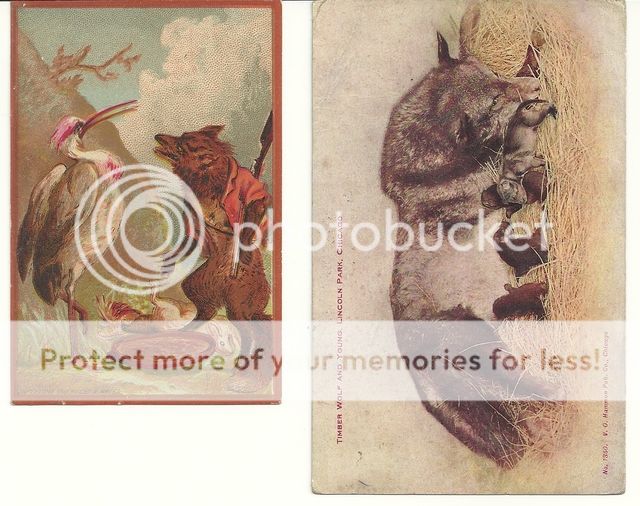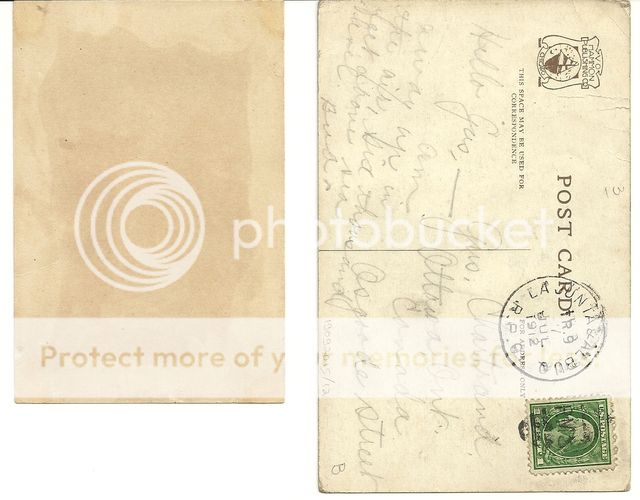Mark Anthony
Bench Warmer
An introduction:
First a little background about me and why I collect. I have been a die-hard baseball card collector for over 30 years. My favorite players are Rickey Henderson and Sean Casey. As affordable, in my range, cards of these two players became less and less available (see my statistics in my signature) I wanted to put my passion and energy into another subject that would yield more new cards in my mailbox on a regular basis. I am also part wolf. No seriously, I have always claimed this LONG before it was "cool" to say so. Tattoos and legit spirit animal aside, I figured that there must be a way to connect my hobby and wolves.
I knew of non-sport animal cards but I did not know much, nor was there a great deal of information available beyond a very limited number of popular sets. Many in this hobby are familiar with the "holy grail" of cards, the T206 Honus Wagner. As monumental as that card is though, many less collectors know less about "tobacco" cards in general.
In the mid to late 1800's, arguably around the same time baseball was invented, smoking and the tobacco industry were big business. I did not care to research statistics on quantity sold or money made, but it must have seemed like there were as many cigarette companies as there were baseball card brands in 2005. You have have heard of names like Piedmont, Polar Bear and Old Mill, and even Phillip-Morris got their start in this era.
During this time, a pack of cigarettes were packed in nothing more than tissue paper. Manufactures inserted a cardboard, or at least thicker stock paper in the packs to hold them together and in shape. Advertisements were placed on the thicker card stock, then eventually pictures and presto, a tobacco card.
A "tobacco" card is a bit of a misnomer though. Much like when people say they go roller blading, but in fact do not own a pair or brand name Rollerblades. Cards with pictures and advertisements were quite often packed with coffee, tea, of course gum and candy, and even baking soda (as you will see in later posts) just as often as they were in packs of cigarettes.
A quick search on eBay will enlighten you as to the sheer number of different subjects depicted on vintage non-sport cards. of course there were sports figures, and anything and everything from birds, butterflies, fish, planes, trains, boats, foreign castles, flags of countries, actors, military medals, animals, flowers and the list goes on and on. As I went further down the rabbit hole of animal card sets looking for wolves, the sets became increasing more specialized to include wild animals, zoo animals, farm animals, specifically four legged mammals, and predators. A couple of different manufactures stated their product contained an educational piece. They wanted to depict zoo and foreign animals so their customers who live in big cities could read and learn about animals that they might not ever get to see in real life.
I learned some other interesting things about card manufacturing from this era. As many of the sets were regional or at least the manufacturer did not plan on their customers switching brands, companies would sell the images of both the card fronts and backs to a competitor as soon as two years after they were originally used. Only small changes had to be made to the cards like changing logos and the brand/company name. As cards inserted into products was gaining in popularity and everyone wanted to jump on the band wagon quickly. It was often quicker and cheaper to buy images from a competitor then commission an artist to create a whole new set. We will see multiple examples of cards that are virtually identical save for some minor details in later posts. Another interesting detail is that a lot of the early NON-sport card sets were produced overseas including countries all over Europe, Australia, and even Canada. At least early on, a lot of the bigger sports themed sets were made in the USA. This actually makes sense. In 1910 how often would people from England, let alone America, see German Castles? Or a farmhand, who never would go to a zoo in a big city, see lions and elephants? A common theme that will appear here in several cards, and is the subject material for several sets period, are Aesop's fables. This is probably partly due to the fact that not much was known about wolves then and they were seen as mean or evil that lessons and human characteristics could be learned form all animals.
This led me to decide what I would collect for my wolf card collection. I decided to collect cards that were numbered or listed as part of a set, (no postcards or lithographs) had to have at least part of the card identifying text in English, (a requirement to be graded by PSA) and be strictly about or depict wolves. I did not include cards about the Shepard boy who cried wolf. I actually have wolf cards up to and including 2015 issues. For purposes of this series, I consider (and will only post) "vintage" cards to be up to WWII, 1945.
I will start off the pictorial with a couple of my first wolf cards, before I narrowed down my collecting scope.
I do not know much about the card on the left other than it is was issued around 1890. It is roughly 3X5 and I think depicts the fable of the fox and stork. It was probably issued with either coffee, flour, or some other dry good. I thought it was a wolf and did not know this fable when I purchased this item. A blank back with only the copyright information in small script on the bottom left corner The copyright says 1887, but my research led me to believe this was not issued until three years later. Obvious glue staining on the back.
The post card is from 1912 and is quite literally a post card. I am not a stamp collector, but was told that the cancelled $.01 stamp is probably worth more than the wolf post card itself. The identification indicated that this wolf was in the Lincoln Park Zoo in Chicago. I am impressed with the sharpness of the picture taken for the post card. The detail of the individual straw and around the wolf's eyes is really good for being over 100 years old!
I will update this thread series 2-3 times a week staring with the oldest card I own dating form 1887!
Tal
Wow! Your first wolf card looks great. It is so artistic and it has a story to it. You should continue making cards like these. It is not just a card but it also depicts an animal life. Keep it up.









